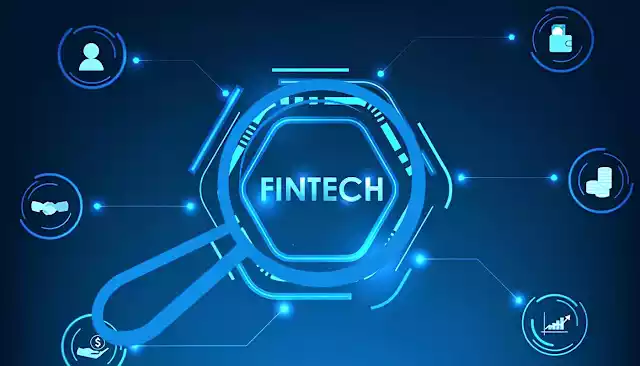Last updated on April 4th, 2025 at 06:41 am
Fintech, or Financial Technology, is revolutionizing the way we manage finances, make payments, and invest. From mobilepayments to blockchain technology, fintech innovations are bringing unprecedented convenience and efficiency to users worldwide. This article delves into the definition, importance, key areas, technological innovations, market trends, challenges, and future outlook of fintech. By providing comprehensive insights and practical advice, this guide aims to help readers better understand and leverage fintech.

1. Understanding Fintech
1.1 Definition and Importance
Fintech refers to the use of technology to enhance and improve the delivery of financial services. It spans everything from payments and transfers to personal finance, investing, insurance, and lending. The importance of fintech lies in its ability to increase the efficiency of financial services, reduce costs, and provide users with a more convenient experience.
- Definition: Fintech is the abbreviation for Financial Technology, focusing on technological innovations to improve financial services.
- Importance:
- Enhances the efficiency of financial services
- Reduces transaction costs
- Improves user experience
- Promotes financial inclusion
1.2 Historical Development
The history of fintech can be traced back to the 1950s with the invention of credit cards. However, significant breakthroughs occurred in the early 21st century with the rise of the internet and smartphones. Key stages in fintech development include:
- Early 2000s: Emergence of online banking and payment systems.
- 2010s: Widespread adoption of mobile payments and P2P lending platforms.
- 2020s: Integration of blockchain, cryptocurrency, and artificial intelligence.
1.3 Future Outlook
Looking ahead, fintech will continue to drive transformation in the financial industry. Key trends include:
- Artificial Intelligence and Machine Learning: For risk management and personalized services.
- Blockchain Technology: Enhancing transaction transparency and security.
- Open Banking: Sharing data via APIs to foster innovative services.
2. Key Areas of Fintech
2.1 Payments and Transfers
Payments and transfers are a core area of fintech. Mobile payments, digital wallets, and cross-border payment technologies are reshaping traditional payment methods.
- Mobile Payments: Such as Apple Pay and Google Pay.
- Digital Wallets: Like Alipay and WeChat Pay.
- Cross-Border Payments: Solutions like Ripple’s blockchain technology.
2.2 Personal Finance and Investing
Fintech is making personal finance and investing more accessible and intelligent.
- Robo-Advisors: Platforms like Betterment and Wealthfront.
- Smart Investment Advice: Algorithm-based investment recommendations.
- Personal Finance Management Tools: Such as Mint and Personal Capital.
2.3 InsurTech
InsurTech leverages technological innovations to improve insurance services, including faster claims processing and more accurate risk assessment.
- Smart Claims Processing: Using AI for rapid claims handling.
- IoT Devices: Optimizing insurance products through device data.
- Blockchain: Enhancing transparency in insurance contracts.
2.4 Lending and Credit
Fintech is transforming traditional lending and credit services, offering faster approvals and lower interest rates.
- P2P Lending: Platforms like LendingClub and Prosper.
- Credit Scoring Models: Data-driven credit assessments.
- Small Business Loans: Services like Kabbage and OnDeck.
2.5 Blockchain and Cryptocurrency
Blockchain technology and cryptocurrencies are redefining financial transactions.
- Bitcoin and Ethereum: Mainstream cryptocurrencies.
- DeFi (Decentralized Finance): Financial services without intermediaries.
- Central Bank Digital Currencies (CBDCs): Such as China’s digital yuan.
3. Fintech Innovations and Trends
3.1 Technological Innovations
Fintech innovations are driving rapid industry growth. Key technologies include:
- Artificial Intelligence and Machine Learning: For risk assessment and personalized services.
- Blockchain Technology: Enhancing transaction transparency and security.
- Big Data Analytics: Optimizing customer experience and decision-making.
- Cloud Computing: Reducing IT costs and increasing flexibility.
3.2 Market Trends and Forecasts
The fintech market is expected to continue strong growth in the coming years. Key trends include:
- Global Market Expansion: Especially in emerging markets.
- Regulatory Technology (RegTech): Helping financial institutions comply with regulations.
- Open Banking: Sharing data via APIs to foster innovative services.
4. Challenges and Opportunities in Fintech
4.1 Challenges Faced
Despite its benefits, fintech faces several challenges:
- Regulatory Complexity: Variations in regulations across countries.
- Cybersecurity Risks: Data breaches and fraud.
- Technology Adoption Rates: Particularly in developing countries.
4.2 Potential Opportunities
Fintech also presents numerous opportunities, especially in:
- Financial Inclusion: Serving the unbanked population.
- Cost Efficiency: Reducing the costs of traditional financial services.
- User Experience: Providing more convenient and personalized services.
5. User Experience in Fintech
5.1 Importance of User Experience
User experience is a critical factor in the success of fintech. A good user experience can enhance customer satisfaction and loyalty.
- User Interface Design: Intuitive and easy-to-use interfaces.
- Personalized Services: Customized experiences based on user behavior and preferences.
- Customer Support: 24/7 online support and chatbots.
5.2 Strategies to Improve User Experience
- User Feedback: Regularly collecting and analyzing user feedback.
- A/B Testing: Optimizing product features and interfaces.
- User Education: Providing tutorials and guides to help users better utilize products.
6. Personalized Services in Fintech
6.1 Benefits of Personalized Services
Personalized services help financial institutions better meet customer needs, improving customer satisfaction.
- Increased Customer Engagement: Through customized recommendations and services.
- Enhanced Customer Loyalty: By offering more relevant products and services.
- Improved Brand Value: Building brand trust through better customer experiences.
6.2 Implementing Personalized Services
- Data Analytics: Collecting and analyzing user behavior data.
- Machine Learning: Predicting user needs and preferences.
- Personalized Recommendations: Offering tailored suggestions based on user history.
7. Financial Education and Training
7.1 Importance of Financial Education
Financial education empowers users to better manage their finances and make wiser decisions.
- Improving Financial Literacy: Helping users understand complex financial concepts.
- Preventing Financial Fraud: Educating users to identify and avoid common scams.
- Promoting Financial Health: Providing tools and resources to achieve financial goals.
7.2 Educational Resources
- Online Courses: Such as those on Coursera and edX.
- Blogs and Articles: Offering practical financial knowledge and tips.
- Interactive Tools: Like budget planners and investment calculators.
8. Fintech Community Building
8.1 Importance of Community Building
Fintech communities facilitate knowledge sharing, experience exchange, and best practices.
- Knowledge Sharing: Through forums and discussion groups.
- Enhanced User Engagement: Through activities and challenges.
- Building Brand Trust: Through active community participation.
8.2 Community Activities and Interaction
- Online Forums: Such as Reddit’s fintech section.
- Offline Events: Conferences and workshops on fintech.
- Social Media: Engaging with users via Twitter and LinkedIn.
9. Case Studies in Fintech
9.1 Successful Case Studies
- Payments: PayPal’s global payment network.
- Investing: Robinhood’s commission-free trading platform.
- Blockchain: Ripple’s cross-border payment solutions.
9.2 Failed Case Studies
- Security Breaches: The Mt. Gox cryptocurrency exchange hack.
- Regulatory Issues: Compliance failures in some P2P lending platforms.
- User Experience: High user churn rates in certain fintech applications.
10. Future Outlook of Fintech
10.1 Future Technological Innovations
- Artificial Intelligence and Machine Learning: Smarter risk management and personalized services.
- Blockchain Technology: More secure and transparent transactions.
- IoT (Internet of Things): Optimizing financial services through device data.
10.2 Market Forecasts and Trends
- Global Expansion: Especially in emerging markets.
- Open Banking: Sharing data via APIs to foster innovative services.
- Regulatory Technology: Helping financial institutions comply better with regulations.
10.3 Long-Term Impact on the Financial Industry
- Increased Efficiency: Through automation and intelligent services.
- Reduced Costs: By minimizing intermediaries and operational expenses.
- Enhanced User Experience: Through more convenient and personalized services.
Conclusion
Fintech is transforming the delivery of financial services, bringing higher efficiency, lower costs, and better user experiences. Through continuous innovation and technology application, fintech will continue to drive changes in the financial industry. Here are the key takeaways from this article:
- Technological Innovation: AI, blockchain, and big data are driving fintech advancements.
- User Experience: A good user experience is key to fintech success.
- Personalized Services: Providing customized services through data analytics and machine learning.
- Education and Community: Enhancing user engagement and trust through education and community building.
- Future Outlook: Fintech will continue to drive innovation and transformation in the financial industry.
By understanding and leveraging the potential of fintech, individuals and businesses can better manage their finances and achieve greater success.





